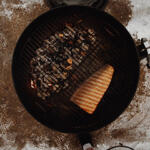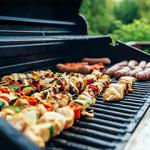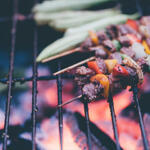

Gas barbecues – tips for the perfect evening
Nothing is better than a barbecue on a warm evening; a chance to spend time with friends and family in the great outdoors whilst enjoying delicious burgers, sausages and other delicacies. But gas barbecues don't always come cheap, and to get the best out of yours it's important that you take a few small steps that can make all the difference.
Preparing properly
Like with any barbecue, it's important to set up appropriately. Even before you hook up the gas, make sure that the barbecue itself is in good condition – no mechanical or electrical faults (inadvertently unhooked gas hoses are a common one), as well as ensuring that no carbonised food residue remains. This will ensure that your barbecued food tastes fresh and cooks well. Looking at gas barbecues specifically there are a few extra considerations, for example, make sure that all the gas ports are clear and unclogged so that the flame isn't uneven. Also, make sure you've stocked up on enough bottles of gas. There isn't anything worse than running out before your food is ready, not to mention the obvious dangers of serving undercooked meat or fish.
Getting heated
One major advantage of a gas barbecue is that you can usually titrate the amount of gas entering the system extremely finely, meaning you have absolute control over the temperature your grill will reach. As such, it's useful to have a think about the kinds of temperatures you'll need for the foods you'll be cooking. For red meat, try turning your grill temperature to 190C and wait for a nice sear to appear; reduce your temperature if you prefer your meat rare (only really applicable for beef and lamb), and increase for a browner piece of meat. One thing to note is that gas barbecues can give you a slightly misleading indication by appearing too accurate – the really important measurement is not the figure on the gas dial, but the internal temperature of whatever you're cooking. This will be wholly different, so it might be helpful to buy a meat thermometer and use that to fine-tune the amount of time your meat should spend on the grill. Regardless of whether you're barbecuing with gas, coal or wood, always err on the side of caution, especially when you're cooking poultry or ground meat (like burgers, for instance).
Maximising flavour
There's a long-running stereotype that gas barbecues result in less flavourful food than wood ones. That's simply not true, and in fact, the more intense and consistent heat of a gas barbecue can make things taste even better. However, to enhance flavour as much as possible, there are a few small tricks you can use. If you miss the woody smoke of a wood or charcoal barbecue, consider getting a smoker box and adding some aromatic wood chips to it – mesquite or apple are favourites. If not, just wrap some of the chips in tin foil and put them on the grill along with your meat, allowing the smoky smell to permeate through all the contents of the grill. Relatedly, for a more intense smoky flavour and faster cooking, pop the hood down on your gas grill – that way the heat will be contained and the Maillard reaction will ensure a more complex flavour. Only do this with large cuts of meat, though; for thin pieces of salmon or shrimp, for example, it's best to keep things open.
London Gases: your best barbecuing friend
Like we say, a good gas barbecue experience means having the right resources, and that starts with a plentiful supply of high-quality gas. Explore some of the huge and well-priced range that London Gases have to offer, and feel free to get in touch so that we can help you have the best barbecue possible.
